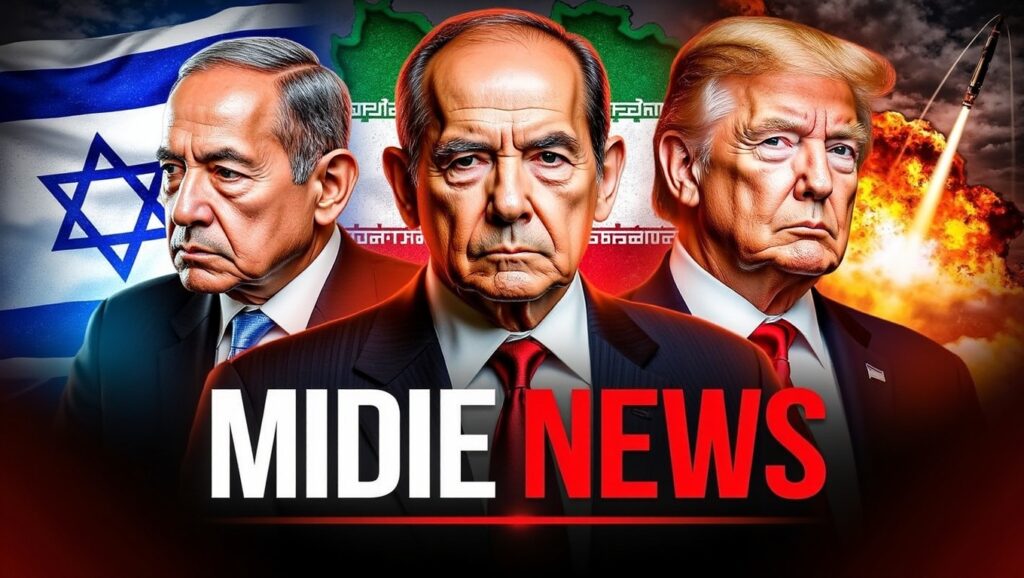Fragile Ceasefire Between Israel and Iran Takes Hold After U.S. Intervention and Deadly Retaliation

A tenuous ceasefire between Israel and Iran is holding after a turbulent 12-day conflict that saw direct military strikes on Iranian nuclear facilities, a deadly missile attack on an Israeli city, and a high-stakes diplomatic intervention by the United States. The agreement, brokered by U.S. President Donald Trump, brought the region back from the brink of a wider war, though it was immediately tested by mutual accusations of violations from both Tehran and Jerusalem.
The conflict represents one of the most significant direct military confrontations between the two regional adversaries. It involved a massive U.S. air assault on Iran’s nuclear infrastructure, a retaliatory missile barrage against a key American airbase in Qatar, and the first instance of civilian casualties in Israel from a direct Iranian strike in recent history. The fragile peace now in place has been met with competing declarations of “historic victory” from both Israeli and Iranian leaders.
A Conflict Ignited
The escalation began on June 13th with initial Israeli strikes on Iranian nuclear sites. The conflict intensified dramatically on June 22nd when the United States executed “Operation Midnight Hammer,” a series of precision strikes using B-2 stealth bombers against three key Iranian nuclear facilities at Fordow, Natanz, and Isfahan.
Following the U.S. strikes, a war of narratives began over the extent of the damage. President Trump and Defense Secretary Pete Hegseth asserted the campaign had “completely and totally obliterated” Iran’s nuclear enrichment capabilities. However, a preliminary assessment from the Defense Intelligence Agency (DIA) suggested the facilities were significantly degraded but not destroyed. The UN’s nuclear watchdog, the IAEA, confirmed “very serious damage” at Natanz and noted that the whereabouts of nearly 900 pounds of potentially enriched uranium were unknown.
Iran’s Retaliation and Civilian Costs
Iran’s response was swift. The Islamic Revolutionary Guard Corps launched 14 missiles at the Al Udeid Air Base in Qatar, a critical hub for American military operations. U.S. and Qatari air defense systems successfully intercepted 13 of the missiles, with no casualties reported.
In a more provocative move just before the ceasefire was enacted, Iran launched a missile that struck a residential building in the southern Israeli city of Beersheba. The attack killed four people, sending shockwaves through a community that thought itself safe from direct Iranian fire. “We thought it was the end,” one resident told reporters.
A Rapid, Fraught Ceasefire
As tensions peaked, President Trump engaged in a whirlwind 48-hour diplomatic effort to halt the fighting. Publicly pressuring both sides to “calm down” and “seal the deal,” Trump brokered the agreement with assistance from Qatari allies.
The truce, however, had a rocky start. Moments after it began, both nations accused the other of violations. Israel reported incoming drones and missiles, retaliating with what it described as a limited strike on an Iranian radar array. An exasperated President Trump reportedly ordered Israeli Prime Minister Benjamin Netanyahu to “bring your pilots home, now!” to prevent the deal from collapsing.
Dueling Victories and an Uncertain Future
Despite the chaos, the ceasefire has largely held. In the aftermath, both leaders have framed the outcome as a major success. Prime Minister Netanyahu declared a “historic victory” over “existential threats,” while Iranian President Masoud Pezeshkian made a parallel claim of a “historic victory” for his nation.
The broader implications of the conflict remain a point of international concern. Russia’s UN ambassador warned that the U.S. strikes had “opened Pandora’s box,” and U.S. naval commanders noted that defensive munitions were being expended at an “alarming rate.” With the ceasefire holding but trust at a minimum, the Middle East remains on a knife’s edge.





